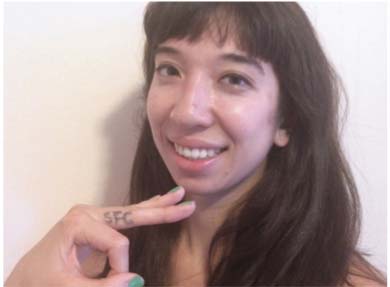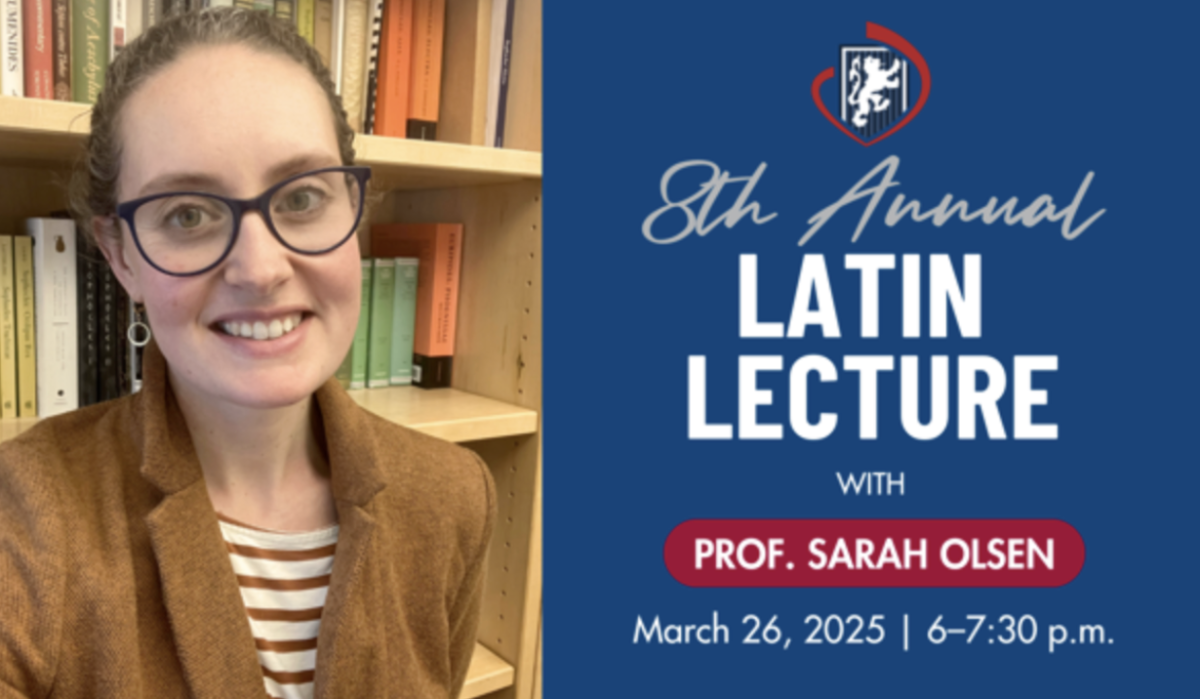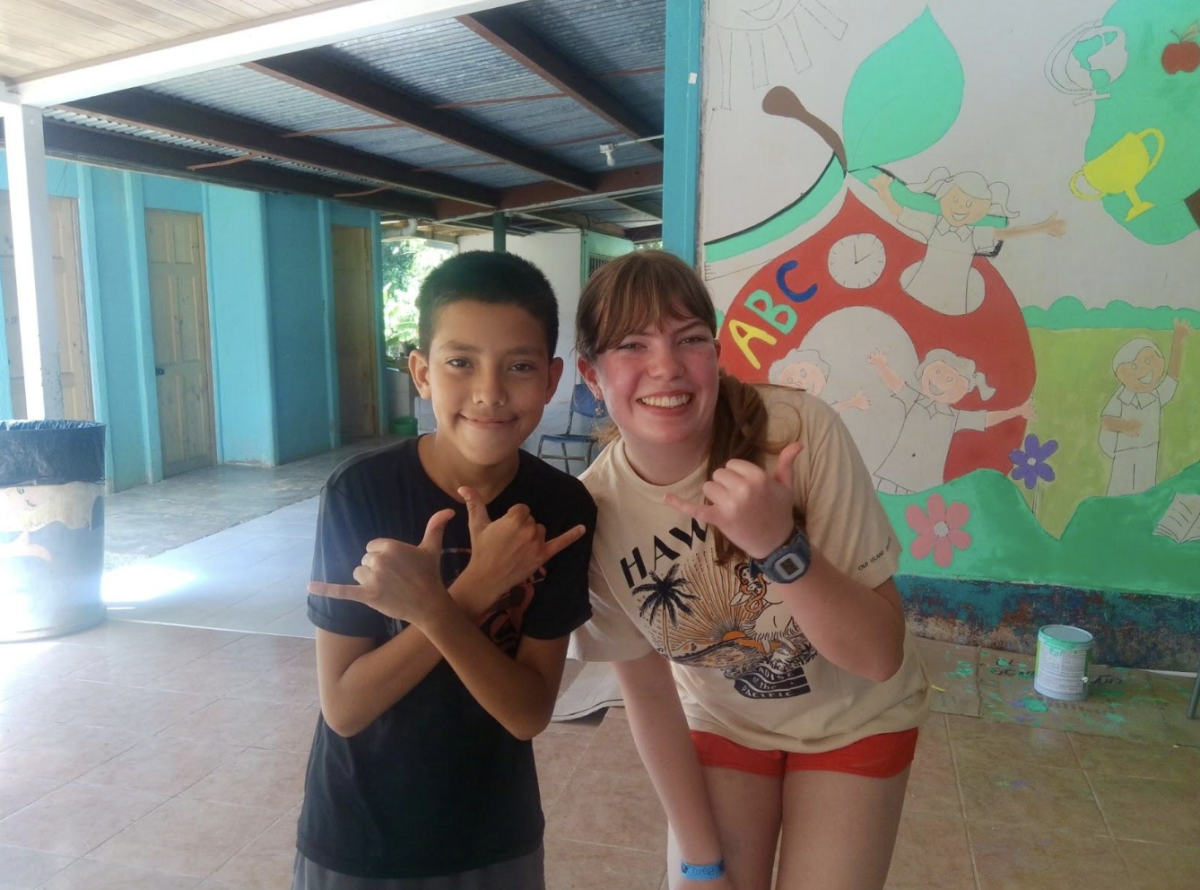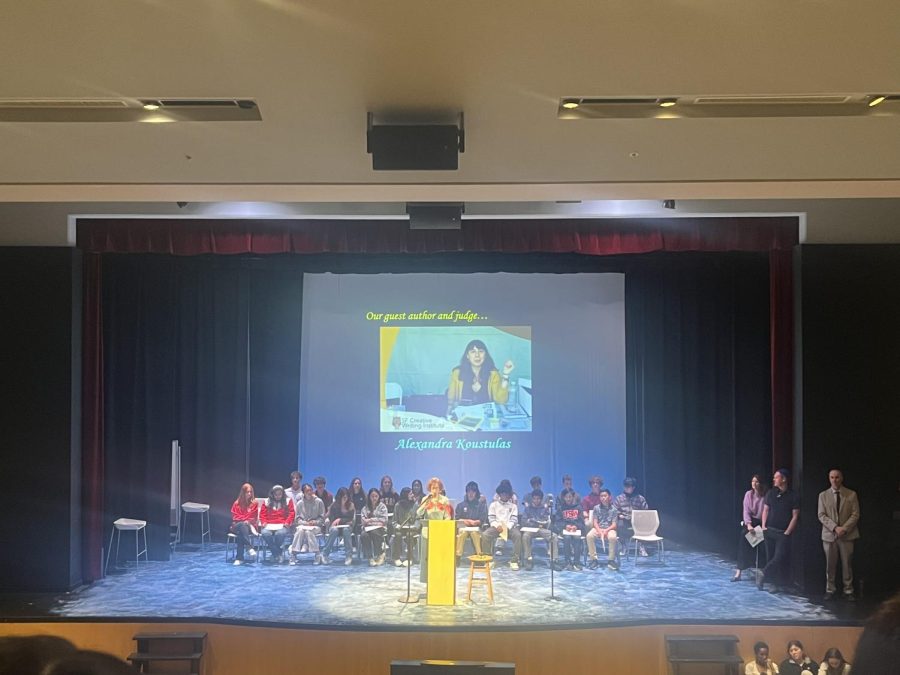Jaime Hum-Nikishado
Hanae Nakajima
Reporters
Junior Camille Bolli-Thompson says she is planning on getting a professional tattoo of a leukemia ribbon this summer, having been diagnosed with the disease in August of 2007, but is now in remission.
“I have wanted to get a tattoo since I was 10 because I thought they were a cool thing to get,” Bolli-Thompson said. “Now it is way more meaningful to me to get a symbol of strength.”
But not every young person puts as much thought into a per- manent body modification.
Allison Sloan (’07) has about a dozen tattoos, one of which in- cludes the face of George Clooney located on her upper thigh.
“I got them all done when I was 18,” Sloan said. “It was crazy — no one at CSH had them, and I guess I wanted to be different.”
Another alumna, Rachel Forbes (’08) did her own stick-and-poke tattoo of “SFC” exhibiting her San Francisco pride, when she was a sophomore at Sarah Lawrence College, using a needle dipped in ink to pierce her skin. “It was a spur-of-the-moment and I decided to tattoo myself because I wanted something un- changing about myself,” Forbes said.
Although Forbes gave herself a small tattoo of only a few let- ters, the California Department of Public Health has higher safety standards and requires licensed tattoo artists to sterilize all tools before use to avoid infection and spreading hepatitis or the HIV virus.
hepatitis or the HIV virus.
Bolli-Thompson’s decision to get a tattoo marks a significant life event, yet some young women get tattoos as a fashion statement — and later have second thoughts.
Rachel McIntire, who chairs the Performing, Fine & Graphic Art Department, had a rose with “Veritus” (Latin for “respect”) tattooed on her upper bicep and an anchor on her inner arm when she was an art history major at Harvard University. McIntire was studying iconography at the time and said she thought if her tattoos were “important enough” she would not later second-guess her decision.
“I’ve considered removing my tattoos, but not because I regret them,” McIntire said. “They don’t bother me that much, [but] I would consider getting them re- moved because they promote a lot of really boring conversations. People always want to talk to you about why you got the tattoos and what the tattoos are about, and you don’t want to talk about that with strangers, so I end up making up stories or just don’t answer them.”
Strangers’ interest in her tattoos often do not end with just a conversation.
“It’s an excuse for creepy guys to touch you,” McIntire said. “So often, if your tattoo is exposed, they’ll literally touch my arm and try to talk to me about tattoos. It’s horrible.”
Sloan sees her tattoos differently.
“I actually like my George Clooney tattoo because I think it’s really funny,” Sloan said. “I don’t think I would get my tattoos re- moved because it’s supposed to be very painful, expensive, and the process takes a really long time. If the whole process becomes easier, I would get them removed.” Most people who have their tattoos removed do so because they are joining the military, have names of former partners on them, or they just do not like how the tattoo turned out, according to Kristy Miranda, tattoo removal assistant at Wellskin, located in Orange County. “Laser tattoo removal shatters the ink that is located in the dermal layer of your skin,” Miranda said. “Once the ink is shattered, it is then up to your body’s immune system to flush the ink out.”
It takes on average from five to 15 treatments to fully remove a tattoo. Numbing cream can make the process less painful and anti- biotic ointment can aid the heal- ing process.
Despite the pain and risks of getting and removing a tattoo, Bolli-Thompson still wants to go through with getting inked.
“I want to get the ribbon on either my ribs or my ankle,” said Bolli-Thompson. “I don’t think I will regret it because leukemia was, and is, a huge part of my life and it shows what I have been through.”









